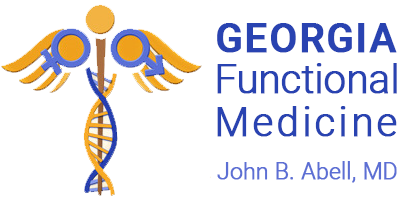Everyone knows about estrogen. I don’t think I have ever seen a woman in my office having hormonal symptoms who didn’t ask about estrogen. I hardly ever have someone come in and ask about progesterone. In the world of hormones, a very important concept is hormonal balance. Insulin secretion keeps blood sugar controlled and prevents it from going too high. What about low blood sugar? If there were not hormones to balance insulin, we would all be bottoming out our blood sugar after a meal when our insulin went to drive the blood sugar into cells. The hormones that assist in keeping us from hypoglycemia or low blood sugar include cortisol, glucagon and the catecholamines.
Hormones stimulate things. Insulin stimulates glucose or blood sugar transported out of the blood and into cells. Unopposed insulin therefore would create a state of low blood sugar if we did not have something to balance the blood sugar as above. In a like manner, estrogen stimulates growth of cells. If cells continue to grow unopposed, what is the eventual outcome? Continual growth of cells is called hyperplasia. Unopposed hyperplasia can lead to cancer and to other things like heavy menstrual cycles (sound familiar?). Progesterone is the main hormone in the body that helps balance the effects of estrogen. Progesterone causes differentiation of cells. This is a very important concept that pertains to a woman’s risk of breast cancer.
A very important study in 1981, published in American, J Epidemiol 114: 209-217 (1981) made some pretty significant observations. In order to investigate the nature of the association of involuntarily delayed first birth and risk of breast cancer, 1083 white women who had been evaluated and treated for infertility from 1945–1965 were followed prospectively through April 1978 to ascertain their breast cancer incidence. These women were categorized as to the cause of infertility into two groups, those with endogenous progesterone deficiency (PD) and those with nonhormonal causes (NH). Women in the PD group had 5.4 times the risk of premenopausal breast cancer compared to women in the NH group. This excess risk could not be explained by differences between the two groups in ages at menarche or menopause, history of oral contraceptive use, history of benign breast disease or age at first birth. Women in the PD group also experienced a 10-fold increase in deaths from all malignant neoplasms compared to the NH group. The incidence of postmenopausal breast cancer did not differ significantly between the two groups.
This is one of the first studies showing an association between low progesterone and the risk of breast cancer. Indeed, breast cancer risk sharply increases in the perimenopausal age range prior to menopause. Studies show a direct correlation between the decline in progesterone and the increase in breast cancer risk. Please understand, I am not inferring that this is the only reason for breast cancer, it is an important correlation however. Natural progesterone as opposed to synthetic progestins down regulates estrogen receptor-1, induces breast cancer cell apoptosis (cell death) and down regulates a protein called Cyclin D1, which arrests breast cell proliferation. Synthetic progestins, in contrast, do the opposite to these actions therefore increasing the risk of breast cancer.
Synthetic progestins have been clearly associated with an increased risk for breast cancer. The highest risk for breast cancer in the Women’s Health Initiative was in the subgroup taking medroxyprogesterone. The Nurses’ Health Study showed that the addition of a synthetic progestin to estrogen replacement resulted in a tripling of the risk of breast cancer.
Now, Americans typically do not use studies from abroad as acceptable data. However, in 2007, Fournier, et al in the French Study, the E3N-EPIC Cohort, which is a study looking at more than 80,000 postmenopausal women who were followed-up for more than 8 postmenopausal years, confirmed just what the American study had shown—a significant increase in breast cancer in women treated with synthetic progestins. However, this risk was reduced—essentially eliminated—with the use of natural progesterone.
What about the heart? Again, the WHI demonstrated a substantial increase in the risk of heart attack and stroke in women taking synthetic progestins. Progesterone, in contrast, has the opposite effect because it maintains and augments the cardioprotective effects of estrogen. The PEPI trial showed that the addition of natural progesterone to conjugated equine estrogen showed a much better cholesterol profile than on women who were taking synthetic progestins. A number of studies have shown that coronary artery spasm is reduced with the use of estrogen and/or progesterone but the addition of synthetic progestins has the opposite effect, resulting in vasoconstriction. Comparison of the two regimens showed a 50% reduction in atherosclerotic plaques of the coronary arteries with progesterone compared to synthetic progestins. Arterioscleroisis, 1990.
Should we ignore all of this good data and wait for a randomized, controlled study that in reality will never come about? I think not. There are numerous studies showing that bioidentical hormone replacement therapy is safer and more efficacious than the commonly used synthetic versions. There are actually some other pretty cool things about progesterone as far as symptoms and conditions that are improved with its use. I hope to get into these in further articles. Thank you for your attention.
I would like to thank David Zava, PhD who has been studying the effects of progesterone for over 30 years and has directed me to some of my background data, as well as Kent Holtorf, MD for his excellent journal article published in Postgraduate Medicine January 2009, which I have also used for reference material.
John B. Abell M.D.
